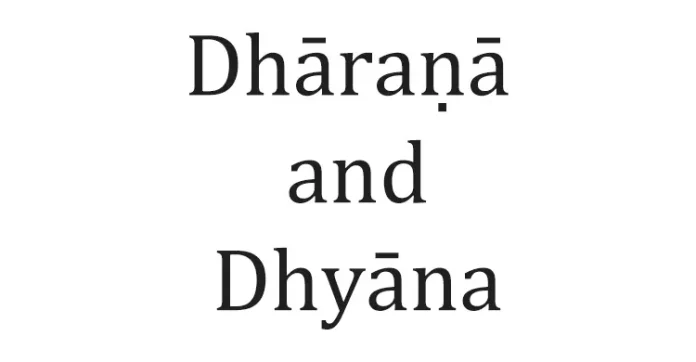Embracing a yogic lifestyle doesn’t require you to be an experienced yogi or meticulously follow Patanjali Yoga Sutras in a specific order. In our modern world filled with cluttered and distracted minds, where entertainment awaits with every scroll, finding focus has become vital.
Patanjali’s Yoga Sutras, presents the Eight Limbs of Yoga, a profound roadmap to a more fulfilling and purpose-driven existence. These Eight Limbs beautifully illustrate that there are multiple pathways to attain harmony and spiritual enlightenment. By embracing this comprehensive system, you can effortlessly journey towards the ultimate state of samadhi, a blissful state of true self-realization.
Dhāraṇā and Dhyāna, the last two stages leading up to samadhi, focus on cultivating the inner experience essential for attaining this ultimate state.
Dhāraṇā
In Mahabharat, The Pandava brothers were given a task by their Archery Guru. They had to aim at a wooden fish’s eye by only looking at its reflection in the water. The eldest brother, Yudhisthira, saw the sky, birds, and fish. The second brother, Bhima, saw the tree, branches, leaves, and fish. Finally, Arjuna, the last brother, focused solely on the fish’s eye. His focus is what we can call as Dhāraṇā
Dhāraṇā, the sixth of Patanjali’s Eight Limbs, is all about focused concentration. It’s the practice of directing your complete attention to a single point of focus, whether it’s an object, a specific spot, or even just your breath. This process of concentration allows you to hold your mind steady, locking it onto the chosen target.
To achieve this Dhāraṇā, the practitioner must focus entirely on their inner experience, avoiding distractions that may arise from an active mind. However, this can be difficult in our digitally-driven world where our thoughts often jump from one worry to another, creating a “monkey mind.” Staying engaged with the present moment is crucial for Dharana, which involves meditating on a single point to foster our inward consciousness.
Also read: The Silent Retreat- Maun Sadhana
Dhyāna
There is a story in Zen philosophy about The man on the hilltop. Three people observed a man standing motionless on a hilltop and debated about his purpose. One person believed he was looking for a lost cow, another thought he was waiting for a friend, and the third felt he was meditating. Unable to agree, they decided to approach the man and ask him directly.
The man replied, “I am simply standing. Can I not have the freedom to stand? Must I search for something, wait for something, or take action? Can I not just exist doing nothing?”
Dhyāna holds that this act of standing without any purpose is true meditation. It highlights the beauty of simply being present without the need to do anything else.
By nurturing awareness through Dhāraṇā, we pave the way for Dhyāna the next step in Patanjali’s transformative journey. Dhyāna propels us even deeper into meditation, unlocking the boundless potential of our consciousness. It allows us to embrace life’s subtlest nuances and truly expand our horizons.
Living in this crazy, high-tech world means that distractions come at us from every direction, non-stop. With the never-ending demands and pressures, it’s no wonder we feel like we’re constantly teetering on the edge. That’s why Dhyāna, is more vital now than ever before.
Nowadays, the world demand for us to be present and connected 24/7 which leads our minds and bodies to go under extreme pressure and our minds in various directions. Dhyāna reminds us that what captures our undivided attention has the power to shape who we are.
Also read: Mantra Meditation: Definition, Benefits, Technique, How to Do and More



